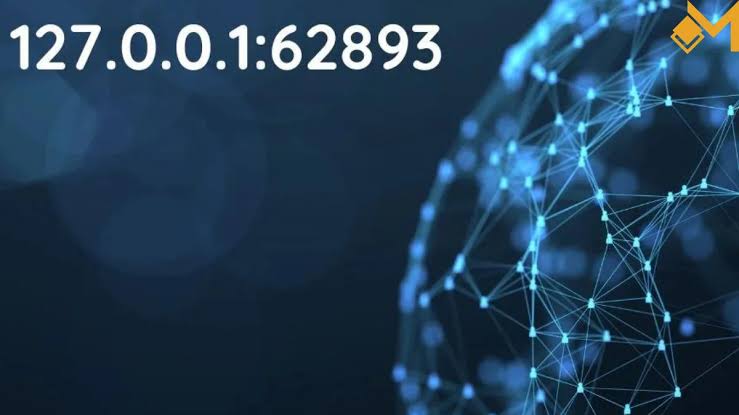Understanding Error Codes in Fintech: A Comprehensive Guide by FintechAsia

In the rapidly evolving world of financial technology (fintech), error codes play a crucial role in identifying and troubleshooting issues that arise during transactions, payments, and other financial operations. Whether you are a fintech professional, developer, or user, understanding these error codes is essential for ensuring smooth and efficient financial processes. FintechAsia, a leading platform for insights into the fintech industry, offers valuable resources on how to interpret and resolve these error codes. In this article, we’ll explore common fintech error codes, their meanings, and how FintechAsia can help you address these issues.
What are Fintech Error Codes?
Error codes in fintech are numerical or alphanumeric indicators that signal a problem during a financial transaction or system operation. These codes are used to pinpoint specific issues, making it easier for users, developers, and support teams to diagnose and fix the problem. Error codes can arise during various stages of a transaction, including payment processing, account verification, or data transmission.
Common Fintech Error Codes and Their Meanings
Understanding the most common fintech error codes can help you quickly identify and resolve issues. Here are some typical error codes encountered in the fintech industry:
1. Error Code 1001: Invalid Card Number
This code indicates that the card number entered is either incorrect or does not match the format required by the payment gateway. Double-check the card information or request updated details from the customer.
2. Error Code 2002: Insufficient Funds
Error code 2002 signifies that the customer’s account does not have enough funds to complete the transaction. In this case, the customer will need to add funds or use an alternative payment method.
3. Error Code 3004: Payment Gateway Timeout
This error occurs when the payment gateway takes too long to respond, often due to network issues or high server load. Retry the transaction or contact the payment gateway provider for assistance.
4. Error Code 4003: Authentication Failure
Authentication failure typically means that the transaction failed due to incorrect credentials, such as a wrong PIN, password, or OTP (One-Time Password). Advise the customer to re-enter the correct credentials or reset their authentication details.
5. Error Code 5005: Duplicate Transaction
This error indicates that the transaction has already been processed, and the system detects it as a duplicate. It’s essential to check transaction history before attempting to process the payment again.
6. Error Code 6007: Regulatory Compliance Issue
In fintech, compliance is crucial. This error occurs when a transaction fails due to non-compliance with regulatory standards, such as KYC (Know Your Customer) requirements. Ensure all necessary documentation and verification steps are completed.
How to Troubleshoot and Resolve Fintech Error Codes
While error codes can be frustrating, they are often straightforward to resolve with the right approach. Here are some general tips for troubleshooting fintech error codes:
1. Check the Error Code Documentation
Most fintech platforms and payment gateways provide detailed documentation on error codes. Refer to these resources to understand what the code means and follow the recommended steps for resolution.
2. Verify Transaction Details
In many cases, error codes are triggered by incorrect or incomplete information. Double-check all transaction details, including account numbers, card information, and payment amounts, to ensure they are accurate.
3. Retry the Transaction
Network issues or temporary glitches can cause error codes. If you encounter an error, wait a few moments and try the transaction again. Often, the issue resolves itself with a retry.
4. Contact Customer Support
If you’re unable to resolve the issue on your own, reaching out to customer support is the next best step. Provide them with the error code and any relevant transaction details so they can assist you more effectively.
5. Keep Your Systems Updated
Outdated software can sometimes lead to errors. Regularly updating your payment systems, apps, and fintech platforms ensures compatibility with the latest security protocols and reduces the likelihood of encountering error codes.
How FintechAsia Helps You Navigate Fintech Error Codes
FintechAsia is a trusted resource for all things fintech, offering in-depth articles, guides, and expert insights on common challenges in the industry. Here’s how FintechAsia can assist you in managing and resolving fintech error codes:
1. Comprehensive Error Code Guides
FintechAsia provides detailed guides on various fintech error codes, explaining their causes, meanings, and solutions. These guides are valuable for both beginners and experienced professionals looking to enhance their understanding of fintech operations.
2. Industry Best Practices
In addition to troubleshooting guides, FintechAsia shares best practices for avoiding common errors in payment processing and financial transactions. By following these practices, you can minimize the chances of encountering disruptive error codes.
3. Expert Insights and Case Studies
FintechAsia’s expert insights and case studies offer real-world examples of how businesses and individuals have tackled fintech challenges. Learning from these experiences can help you apply effective strategies to your own operations.
4. Latest Updates on Fintech Technology
The fintech industry is constantly evolving, and staying updated on the latest trends and technologies is essential. FintechAsia keeps you informed about new developments in payment gateways, regulatory changes, and emerging solutions that can improve your fintech processes.
The Importance of Addressing Fintech Error Codes Promptly
Ignoring or mishandling fintech error codes can lead to delays, lost revenue, and customer dissatisfaction. By addressing these errors quickly and effectively, you can maintain smooth financial operations, build trust with your customers, and ensure regulatory compliance.
Conclusion
Error codes are an inevitable part of fintech operations, but understanding them doesn’t have to be overwhelming. Platforms like FintechAsia provide the tools and resources needed to decipher these codes, troubleshoot issues, and keep your financial processes running smoothly. Whether you’re a business owner, developer, or consumer, knowing how to navigate fintech error codes is crucial for success in today’s digital economy.
FAQs
1. What are fintech error codes?
Fintech error codes are numerical or alphanumeric indicators that signal issues during financial transactions or operations.
2. How can I troubleshoot fintech error codes?
Check documentation, verify transaction details, retry the transaction, contact support, and ensure your systems are up-to-date.
3. What does Error Code 2002 mean?
Error Code 2002 indicates insufficient funds in the customer’s account to complete the transaction.
4. How can FintechAsia help with fintech error codes?
FintechAsia offers comprehensive guides, expert insights, and best practices for understanding and resolving fintech error codes.
5. Why is it important to address error codes promptly?
Addressing error codes quickly helps avoid delays, ensures smooth operations, and maintains customer satisfaction.



![Soujiyi: The Ultimate Platform for [Insert Niche] Solutions](https://vyvymangaa.xyz/wp-content/uploads/2024/08/Soujiyi-860x491-1-768x438.webp)


